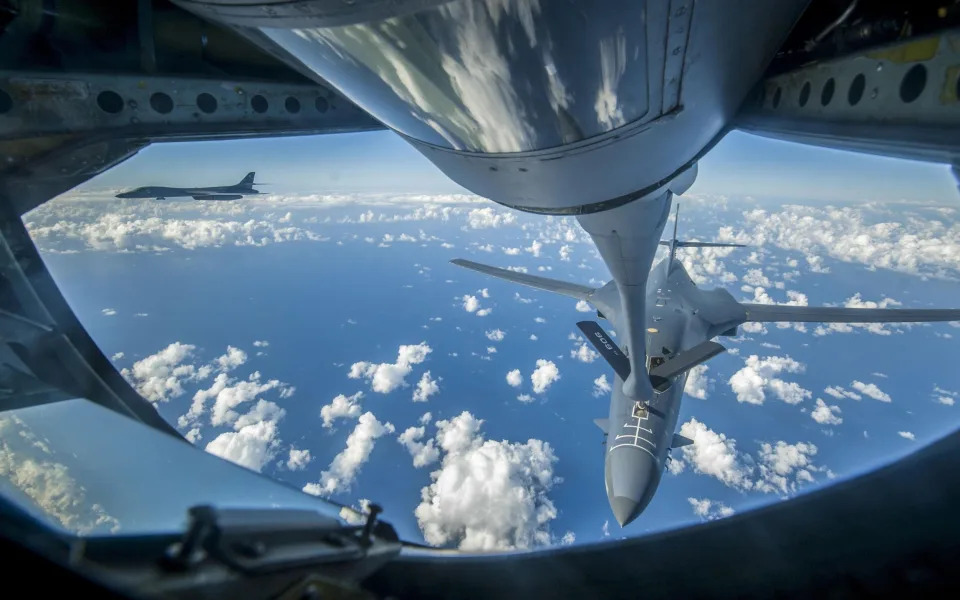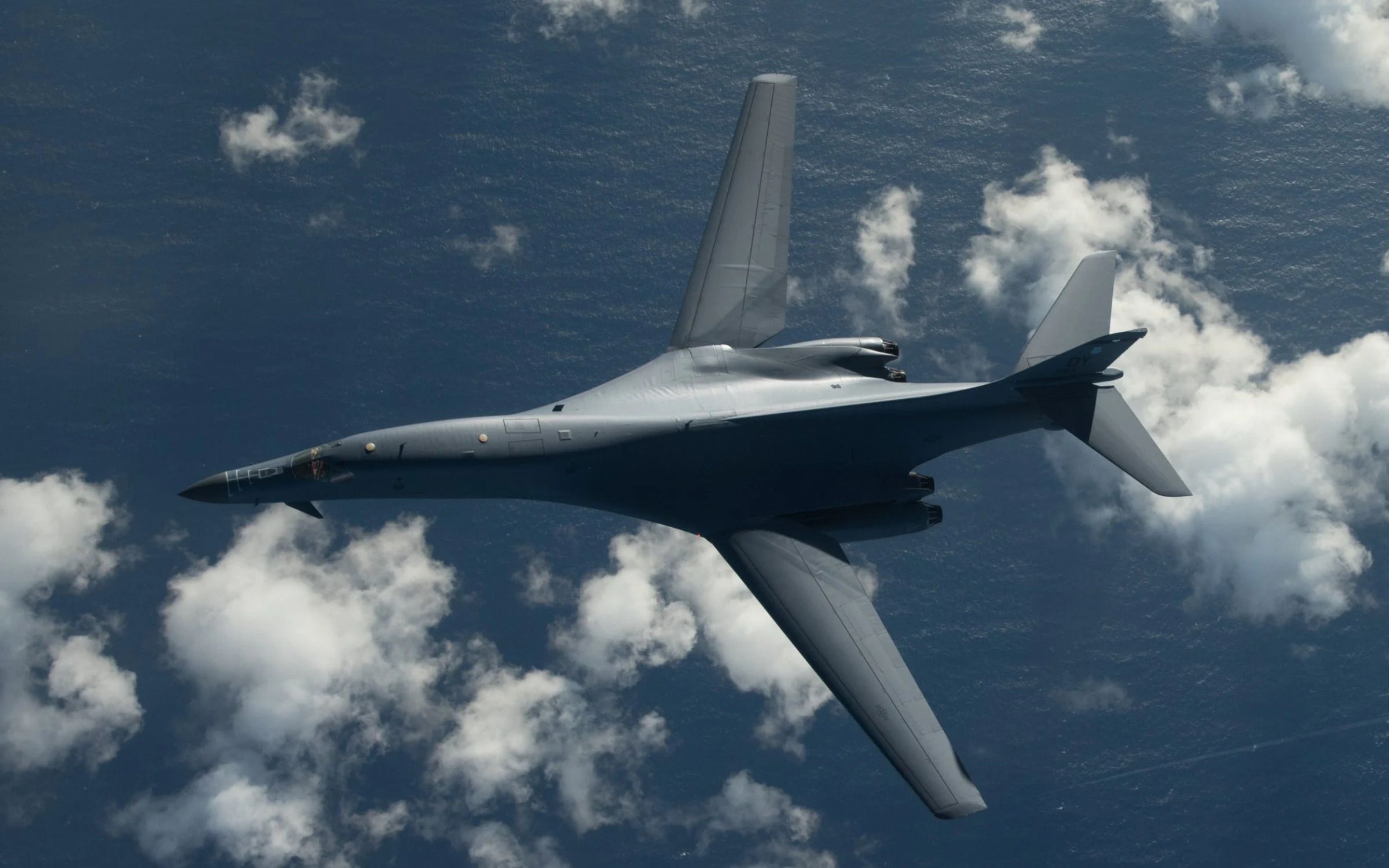The US Air Force is bringing a 40-year-old supersonic bomber out of mothballs. This is why

The US Air Force has 140 of its biggest warplanes – its heavy bombers – in active service: 76 Boeing B-52Hs, 44 Boeing B-1Bs and 20 B-2 stealth bombers built by Northrop Grumman.
But the Air Force has funding for 141 bombers. Its inventory dropped to 140 in 2022, when a B-1 suffered an engine fire at Dyess Air Force Base in Texas – and burned to the ground. The B-1 is sometimes known as “Bone” (from B-one).
A B-1B Lancer supersonic bomber of the US Air Force, pictured during a 10-hour mission from Guam though Japanese and Korean airspace in 2017. The USAF is keen to keep its B-1 force up to strength as it is a key weapon against the Chinese navy and its ability to invade Taiwan -
Any other air force might content itself with 140 bombers and redistribute the lost bomber’s operating budget. But the US Air Force is counting on the B-1 to play a lead role in a possible air war over the Taiwan Strait. It’s such a high priority that the service is spending millions of dollars recovering, from long-term storage, a surplus B-1 nicknamed “Lancelot” that’s been sitting in desert storage, aka “the Boneyard”, for three years.
This is an operation the Air Force has done just three times in recent decades. Besides the B-1, the service returned to flying status two stored B-52s – one in 2020 and another in 2015 – in order to replace bombers that it lost to accidents.
Recovering from storage a machine as complex as a bomber is hard, expensive and time-consuming work. It can take hundreds of people working thousands of hours over a span of years and at a cost of millions of dollars.
That the Air Force is willing to make the investment speaks to the importance of the big, lumbering warplanes as the service positions itself to, among other contingencies, defend Taiwan from a Chinese invasion fleet.
The four-engine, supersonic, swing-wing B-1 – crewed by four people and capable of carrying 37 tons of bombs and missiles over intercontinental distances – is the Air Force’s main anti-ship platform. It can carry 24 of the service’s best cruise missiles, including its Long-Range Anti-Ship Missiles, or LRASMs.
A B-1 “can rapidly deliver massive quantities of precision as well as unguided munitions against any adversary, anywhere in the world, at any time,” the Air Force states. The bomber’s LRASM and its similar Joint Air-to-Surface Strike Missile, or JASSM, are the key weapons for an air and naval war over Taiwan.
A 1.3-ton LRASM ranges hundreds of miles with GPS and inertial guidance, an infrared seeker that can recognize ships and a 1,000-pound warhead that, with luck, can break an enemy ship’s keel.
To maximize the missile’s lethality, manufacturer Lockheed Martin recently configured it to fly in formations of four missiles. The recent first test of the four-missile formation “was the next big step in LRASM’s evolution,” Lockheed boasted. While one LRASM should be able to sink, say, a Chinese frigate, it might take four missiles striking simultaneously to put out of action a Chinese aircraft carrier.
B-1s firing salvoes of LRASMs and anti-ship-capable JASSMs could devastate a Chinese fleet sailing across the 100-mile-wide Taiwan Strait to land troops on Taiwanese beaches. That was one of the main conclusions when the Center for Strategic and International Studies in Washington, DC gamed out a war over Taiwan last year.
“The inventory of several hundred LRASMs, with a range of [370 miles], combined with thousands of JASSM-ERs, with even greater range and modest anti-ship capability, allowing US bombers and tactical aircraft to rapidly attrit the Chinese fleet from beyond the range of its anti-aircraft defenses,” CSIS found.
Conversely, in order to win a war over Taiwan, China must shoot down – or destroy on the ground – a significant portion of America’s bombers. But “this is hard to do because bombers can be based beyond the range of most Chinese ground-attack missiles, approach the theater from several angles and launch standoff missiles beyond the range of defending [surface-to-air missiles],” CSIS reported.

It’s no wonder, then, that the US Air Force carefully maintains the maximum number of bombers it has funding for. Every single active bomber is a flexible and survivable flying missile arsenal capable of damaging or sinking dozens of enemy – that is, Chinese – warships in a single sortie.
The 1980s-vintage B-1s along with the newer B-2s should retire in around a decade as new Northrop Grumman B-21 stealth bombers replace them and, alongside super-upgraded B-52s, take over their roles – presumably including the B-1’s anti-ship role. In the meantime, the Air Force has plenty of inactive B-1s in storage to replace any additional active B-1s that crash or wear out.
That’s because Rockwell, later part of Boeing, built 100 B-1s – dozens more than the Air Force now needs. A few have been destroyed in crashes, but the rest – more than 40 – are lined up in neat rows at the Pentagon’s “boneyard” for old airplanes in the Arizona desert.
The dry climate, plus layers of plastic, help to preserve these valuable airframes. Each is an insurance policy against the accidents or incidents depleting the US Air Force’s main means of sinking Chinese ships.
- Questions and Answers
- Opinion
- Motivational and Inspiring Story
- Technology
- Live and Let live
- Focus
- Geopolitics
- Military-Arms/Equipment
- Sicherheit
- Economy
- Beasts of Nations
- Machine Tools-The “Mother Industry”
- Art
- Causes
- Crafts
- Dance
- Drinks
- Film/Movie
- Fitness
- Food
- Spiele
- Gardening
- Health
- Startseite
- Literature
- Music
- Networking
- Andere
- Party
- Religion
- Shopping
- Sports
- Theater
- Health and Wellness
- News
- Culture


